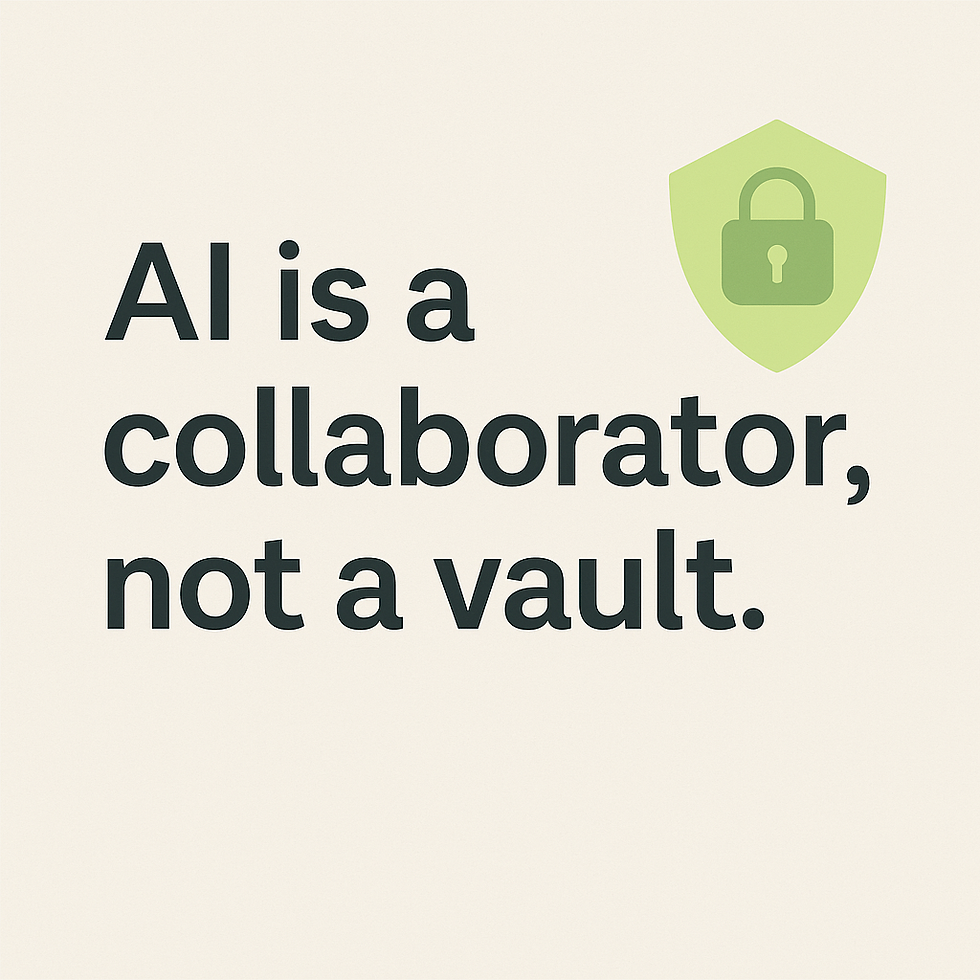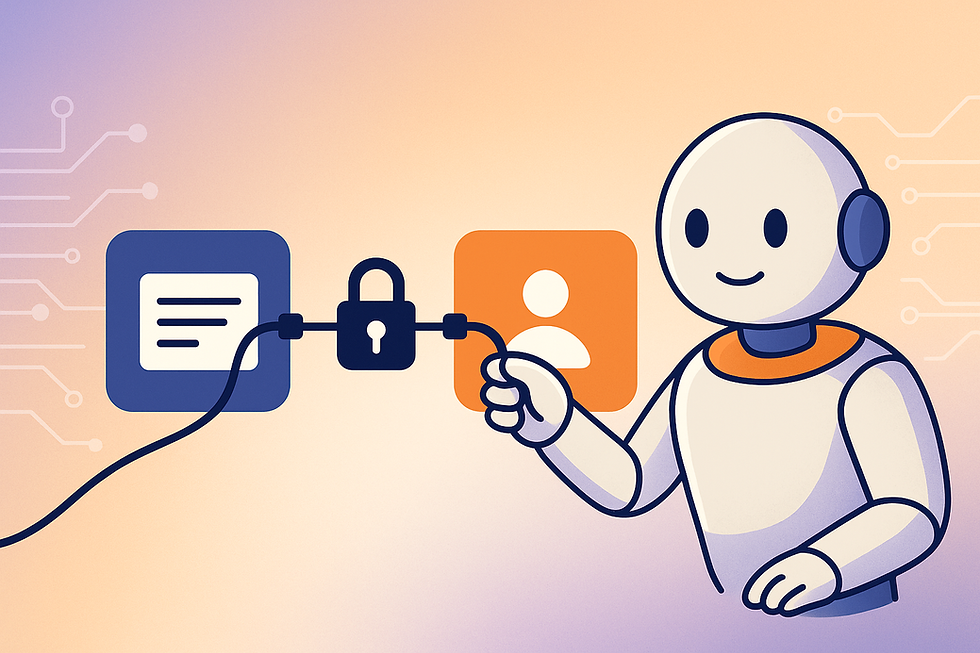Protecting Your IP in the Age of AI: What I Learned (and What I Won’t Share)
- Jennifer Leonard
- Oct 1
- 3 min read

My Initial Worry
Over the past few years I have been leaning on AI tools to help me brainstorm, refine, and validate ideas for multiple ventures. But with the excitement of building something new, I also had a nagging worry. Every time I asked for feedback, I wondered if I was handing over my competitive advantage.
If I pour my frameworks and methodologies into an AI tool, could that same information later resurface for someone else building a similar solution?
What I Learned About AI
The good news is, that is not how AI tools work. I dug in, and here is what I learned:
With chat history ON, your prompts may be stored and sometimes used to improve the model, but they are not searchable by other users.
With chat history OFF, prompts are still processed so the model can respond, but they are not stored long-term.
Either way, the model does not hand your content to another user. It generates responses based on patterns, not database lookups.
That was a huge relief. My ideas were not being fed directly into some communal pot that another founder could dip into.
Still, I realized the risk may not be zero. The bigger concern is around:
Storage and access (your inputs may be retained internally at the provider).
Future training (if history is on, data might influence future model improvements).
Human review (snippets are sometimes looked at for quality control).
While my secrets were not being directly shared, I felt I still needed to be careful. So I set up my own guardrails.
The Guardrails I Use
To protect my IP and my clients’ IP, I keep these off the table:
Proprietary frameworks or scoring models - The step-by-step detail of how I assess or score something is my competitive edge. I only share high-level process steps or categories.
Client or customer data - This includes raw exports, performance metrics, or anything with PII. Instead, I use anonymized sample data if I need to test an idea.
Detailed competitive positioning or pricing - I will never paste in exact market-entry plans or margin assumptions. Instead, I ask about broad industry trends.
It might sound like common sense, but in practice I have seen plenty of smart people drop entire decks or client datasets straight into chat windows for a quick answer. It is fast, but it is not safe.
Protecting Clients
As a founder and consultant, I have to be equally mindful about protecting my clients’ IP. They are trusting me not just with strategy, but with their data and trade secrets.That means:
Keeping raw files out of third-party tools unless anonymized.
Using clear internal processes for what is AI-safe versus AI-sensitive.
Treating AI chats like a business meeting: useful for brainstorming, not the place to hand over blueprints.
Final Thought
AI is a powerful collaborator, but it is not a vault. By drawing clear lines between what you will and will not share, you protect both your own business and the clients who trust you. Using clear guardrails is not complicated, but it is essential. In the age of speed, sometimes the most important step is slowing down long enough to put those protections in place.
If you are experimenting with AI in your own work, putting these guardrails in place will help you move fast without giving away what makes you unique.



Comments